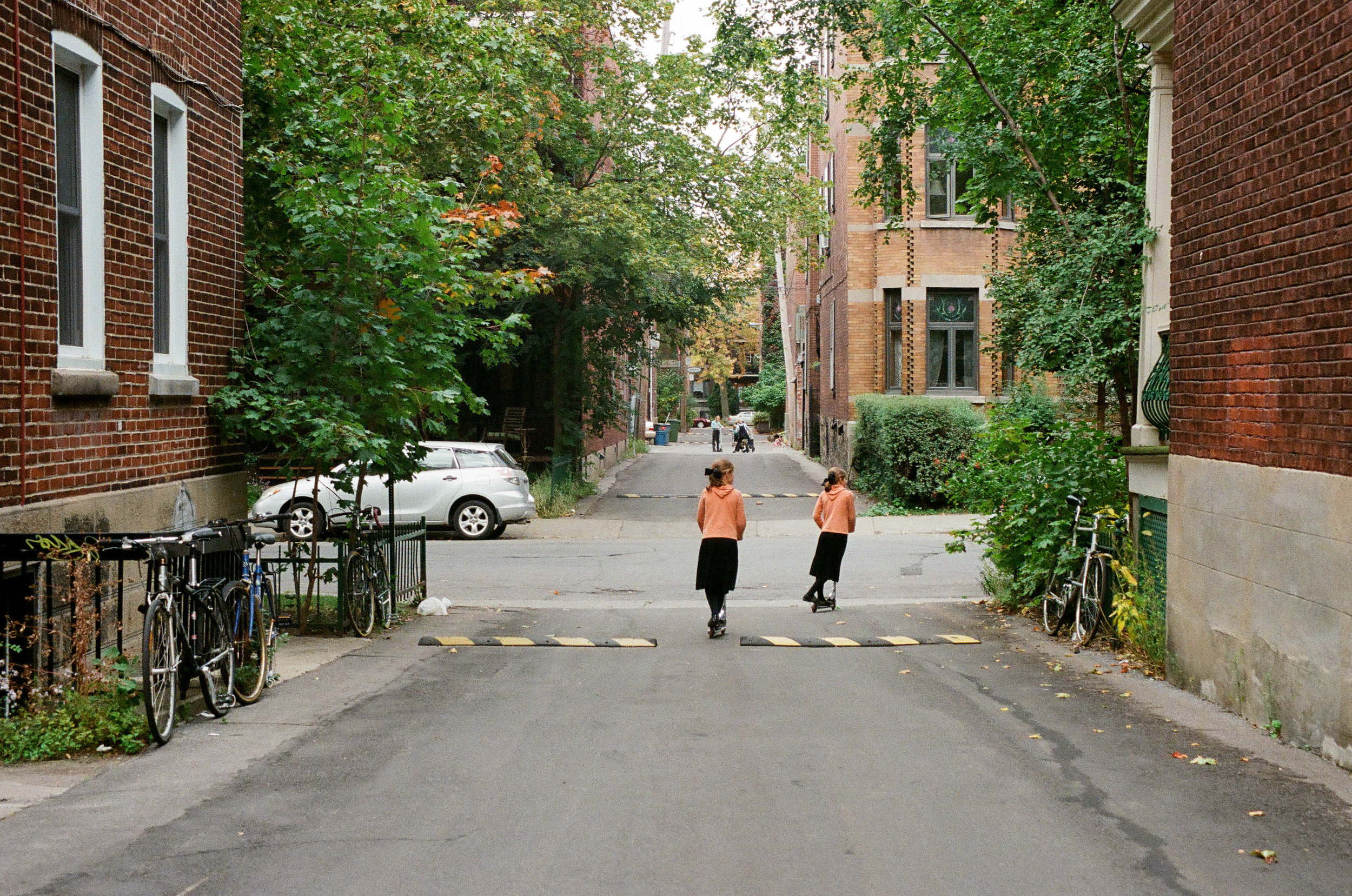Hasidic Women Tell Their Story
“It’s hard enough to live with faith, could you imagine living without it?”
It is Friday night in Montréal and Molly and I are walking along the sidewalk in Outremont, a historically Hasidic neighborhood. I am an anthropology student at Concordia University returning from a field assignment to attend a Shabbat dinner at Molly’s home and investigate the gender based boundary building in the Hasidic community. During the Shabbat, which starts Friday at sundown until Saturday at sundown, the streets are largely dark. Hasidic homes are lit by candlelight and preparations have been made to ensure no electricity is used. It is bitter cold and beginning to snow. I ask Molly if the rumors I have heard about Hasidic women shaving their heads is true. She turns to me and explains, “Head shaving is not explicitly written somewhere but it is a part of Hasidism. It is an optional form of modesty that I adhere to, not because I want to but because the Rabbis tell me to and I trust them because they are closer to God.” I can’t help but internally question her assertion that Rabbis are closer to God, especially seeing as in Hasidism women are not permitted to become Rabbis. Almost immediately I want to dismiss this tradition as sexist and an abuse of power by Hasidic Rabbis but then I remember everything I have learned about cultural relativity and keep an open mind.
She continues to explain that women are sacred in the eyes of God, their hair is too sacred to be viewed upon. She compares women to the Torah and explains the sadness that she feels for women in the secular world holding what she perceives as masculine jobs. “I firmly believe that a women’s make-up is different than a man’s and some women in the secular world are degrading themselves by not recognizing their inner strength, like trash women.” I am taken aback because in one sentence I had both gained and lost respect for Molly. I respected her belief that women and in particular womens hair is sacred, I respected her belief that shaving ones head was a culturally specific and voluntary tradition in Hasidism, but I did not respect her desire to judge others according to her beliefs
Hasidic girls in Outremont
This journey began when a friend who had been living in Outremont for many years put me in touch with her next door neighbor, a friendly Hasidic woman who agreed to meet me in a nearby Kosher bakery and talk to me about Hasidism. Hasids keep Kosher, which means their eating routines are separate from the secular world out of necessity. The grocery stores, bakeries, and eateries Hasid’s go to are limited because they must be Kosher and therefore interactions with the secular world are kept minimal. For Rebecca another woman I spoke to, “Keeping Kosher is just a setting or means to achieve a closer relationship with God.” Although it is winter and not very hard to dress modestly, I have made a strong effort to dress respectfully for my first meeting with Molly in the bakery. Still, quickly after greeting me she says, “What a nice jacket, if only it was black and not pink, it would be much more appropriate.” I take care the next time we meet for the Shabbat dinner to dress in more subdued colors – what I really want is to understand more about the Hasidic community in Outremont, not to get distracted by cultural politics. Walking through the streets of Outremont, it is easy to imagine you are actually walking the streets of pre-WWII Eastern Europe, where the Jewish population lived in close-knit communities. According to Molly, Hasids keep to this tradition of modesty as a means of protecting their heritage and retaining a connection to their ancestry. Her words resonated with me when she explained with great intensity, “If my great, great grandmother were here today, I know she would not only recognize me because of my dress, but would also be proud to know I have stayed true to the Hasidic faith.” For Molly it is the secular world that has changed, while the Hasidic world has stayed the same. I cannot help but think about my own Ashkenazi ancestry and what my great great grandparents would think if they saw me today wearing modern clothes.
Hasidism is an all-encompassing way of life that allows orthodox Jewish women to feel a stronger sense of purpose and belonging in the world. There is a specific focus on community in Hasidism, which is intensified through the creation of boundaries between the Hasidic and secular world. Ultra-orthodox Hasid’s have a highly spiritual worldview which transforms mundane life into sacred experiences. The Montreal borough of Outremont is home to a Hasidic community that has created a highly structured environment to protect their community from outside influences. Hasidic women and children in particular have been the subject of stereotypes about male dominance and female subversion in the Hasidic community but I believe they are largely misunderstood. Living with Emunah, or belief in God is essential to the Hasidic community. When a woman is making food, taking care of her children, getting dressed, working, studying, when she is frustrated, God is there. While outsiders find it easy to jump to conclusions about Hasidism one important fact remains clear. Hasidism provides a way to make sense of a largely unfair world. Molly’s faith is undeniable, “When anything goes wrong we call out to God. God is looking out for me. I trust in God. He knows better and whatever happens he has meant it to be. It’s hard enough to live with faith, could you imagine living without it? Faith is the air we breathe.”
Some names and identifying details have been changed to protect the privacy of individuals.
-Cody Jacobs
Cody Jacobs is a storyteller, photographer, and activist. She graduated from Concordia University in 2016 with an Honors in Anthropology and minor in Photography. A careful eye and a sensitive ear bring her close to the stories unfolding around her. Photographing Orthodox Bar Mitzvah ceremonies from the women’s section of the Western Wall in Old Jerusalem. Young Bosnians gathering courage and raising money to jump off the Stari Most bridge in Mostar. Interviewing Hmong people in a rural village in Laos about the effects of tourism. Visiting farms in Costa Rica to learn about sustainable growing practices. Cody loves traveling and learning from the people she meets along the way. She believes in the power of photography to tell stories that no other medium can, stories that demand attention and have the power to change our world.
All photos on today's stories are Cody's and used with permission. You can see more of her work at codyjacobsstories.com.





















